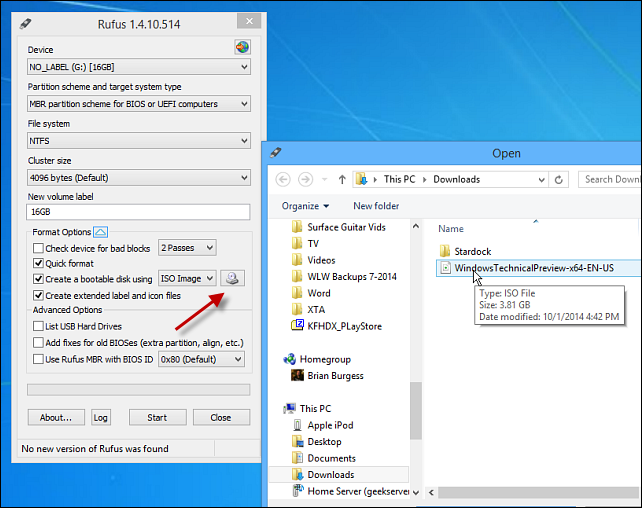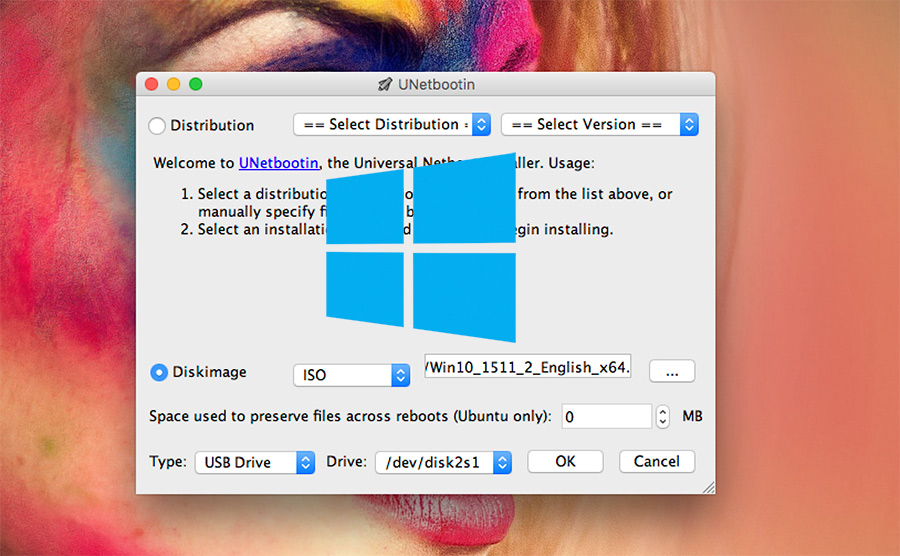


- #Create windows 10 bootable usb with iso how to
- #Create windows 10 bootable usb with iso install
- #Create windows 10 bootable usb with iso update
When you use MBR partition scheme for BIOS or UEFI, under Partition scheme and target system type, the bootable USB will be suitable for devices using BIOS as well as UEFI. Click on the small icon on the right side and browse to the folder, and select the ISO file.įor the rest of the options, you may leave at their default values. To browse to the location, under Format Options, you will see Create a bootable disk using option. You may give a New volume label and browse to the location of your downloaded Windows 10 ISO image. Do note that, you will require a 4 GB USB for the 32-bit version and an 8 GB for the 64-bit version of Windows 10. After you have downloaded this freeware, insert your USB and then click on Rufus to open its main window. It also offers a portable version, which I have used. In this post, I am using Rufus as an example. To do this, you will have to take the help of some software like Windows USB/DVD Download Tool, Rufus, ABUSB, ESET SysRescue Live, WinToFlash, Windows USB Installer Maker, or Windows Installation Media Creation Tool. Once you have done this, you can use it to create a bootable USB or Flash Drive.
#Create windows 10 bootable usb with iso how to
How to create Windows 11/10 bootable USB Flash Drive
#Create windows 10 bootable usb with iso update
We will update this link once the final version is released. In this post, we will see how to download the ISO image, burn it to a USB drive, and create bootable USB media from ISO for Windows 11 or Windows 10 installation.įirst of all, you will have to download the Windows ISO from the official link at Microsoft. This will ensure your USB thumb drive is working properly which may be preventing a successful completion.While most of us may have reserved a copy of the free Windows upgrade for our computers, there may be some who may want to go for a clean install, using a Windows 11/10 ISO image. Expand "Show advanced format options" under Format options in Rufus and check the option to "Check device for bad blocks". Pro Tip: If you are having issues creating your bootable USB thumb drive. The process may take several minutes depending on the speed of your USB thumb drive. Click OK on the confirmation screen to begin creating your bootable USB drive. The Format Options can usually be left as is, hit Start when you are ready. Once selected, just hit Open.įor image option, partition scheme and target system, I suggest using the defaults which are "Standard Windows Installation", GPT Partition Scheme and UEFI target system. If you need to download a Windows 10 ISO file, check out this article. Next, click Select and navigate to your ISO file you want to use. To be safe, I typically use a 16GB thumb drive by Transcend.īy default, Rufus will only display removable USB drives but make sure the correct device is selected under Drive Properties. Make sure that your USB thumb drive is larger than the ISO file downloaded. Once installed, plug in your USB thumb drive and then start up Rufus. Alternatively you can download directly from the Github repository here. To get started, head over to and download Rufus 3.12 or later.

#Create windows 10 bootable usb with iso install
This is very helpful when performing a clean install of the Windows 10 20H2 October update ISO. But recently I switched to using a new tool called Rufus that is both reliable at successfully creating bootable media and automating many steps to quickly get the job done so you can perform a clean install. I've written about a few methods over the years to create a bootable USB flash drive from a Windows 10 ISO file.


 0 kommentar(er)
0 kommentar(er)
